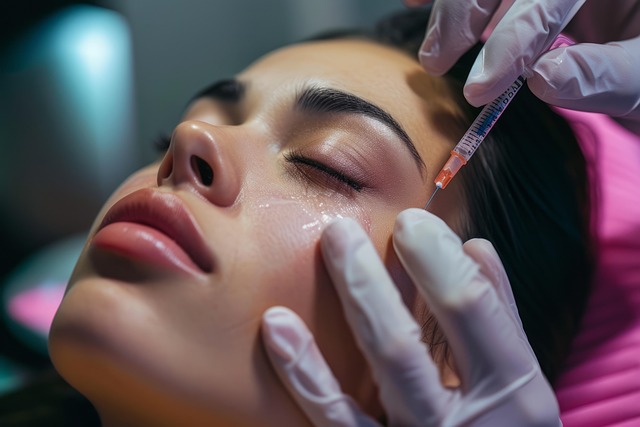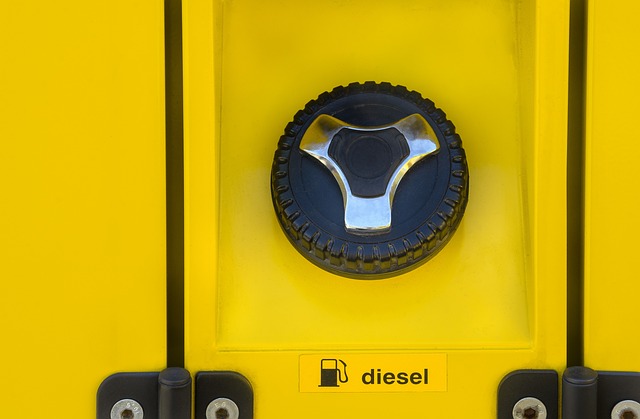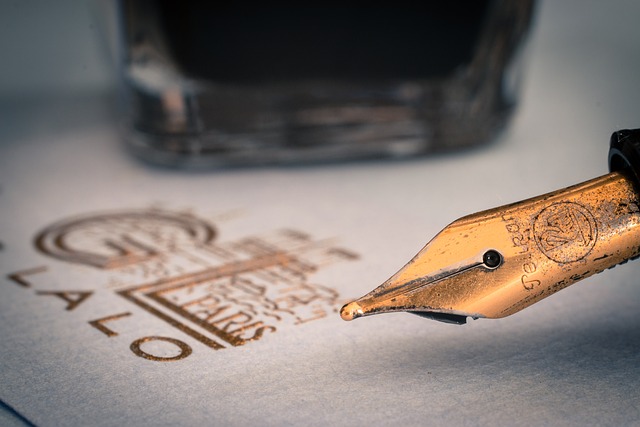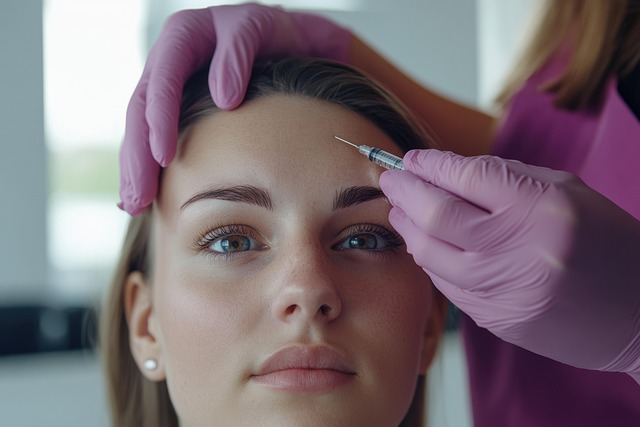Botox and dermal fillers are non-surgical treatments for frown wrinkles, each with distinct mechanisms. Botox relaxes facial muscles to prevent dynamic wrinkle formation, while dermal fillers add volume to smooth static wrinkles. Botox offers precision targeting, minimal side effects, quicker recovery, and a natural appearance. Dermal fillers provide immediate results but may cause more visible side effects. Choosing between them depends on personal preferences, budget, and desired outcomes, with both treatments offering effective solutions for different types of facial aging. Consulting a dermatologist ensures the best alignment of treatment with specific concerns.
“Uncover the secrets to banishing frown wrinkles with targeted Botox treatments. This comprehensive guide explores the science behind frown lines, their causes, and how Botox can be your secret weapon for achieving a youthful complexion. We delve into the differences between Botox and dermal fillers, highlighting the benefits of Botox for specific concerns.
From understanding the procedure and potential side effects to comparing costs with dermal fillers, this article is your ultimate resource. Discover which treatment plan suits you best, whether it’s Botox or fillers, and embark on a journey to a smoother, more confident you.”
Understanding Frown Wrinkles and Their Causes

Frown wrinkles, often located between the eyebrows, are a common concern for many individuals seeking to maintain a youthful appearance. These wrinkles can be deeply etched lines that form as a result of repeated facial expressions, such as frowning or squinting. Understanding their causes is essential in choosing the most effective treatment method.
Both Botox and dermal fillers are popular non-surgical options for addressing frown wrinkles, but they work differently. Botox inhibits muscle contractions, preventing the repetition of specific facial movements that lead to wrinkling. On the other hand, dermal fillers add volume and plumpness to the skin by injecting a substance that integrates with the body’s natural collagen production, smoothing out existing wrinkles. When considering between Botox vs dermal fillers for frown wrinkles, factors like personal preferences, budget, and desired results should guide the decision-making process.
The Role of Botox in Treating Frown Lines

Botox has established itself as a popular and effective treatment for frown wrinkles, offering a non-surgical alternative to dermal fillers. Unlike dermal fillers that plump and enhance specific areas, Botox focuses on relaxing the muscles responsible for causing dynamic frown lines and wrinkles. By injecting a small amount of botulinum toxin into key muscle groups, Botox temporarily paralyzes the muscles, preventing them from contracting and forming those telltale wrinkles.
This targeted approach makes Botox particularly effective for treating expression lines and frown wrinkles that form due to regular facial movements. While dermal fillers can be used to fill in deep wrinkles and add volume, they may not address the underlying muscular causes of dynamic wrinkle formation as effectively as Botox. The advantage lies in its ability to smooth out fine lines and wrinkles without adding substantial volume, making it a preferred choice for those seeking subtle yet natural-looking results.
How Dermal Fillers Differ from Botox

While both Botox and dermal fillers are popular cosmetic treatments, they work in distinct ways. Botox is a neurotoxin that relaxes muscles by blocking nerve signals, which smooths out dynamic wrinkles caused by recurring facial expressions like frowning or squinting. This makes it ideal for treating fine lines and crow’s feet.
On the other hand, dermal fillers are made of hyaluronic acid or similar materials that are injected into the skin to add volume and plumpness. They target static wrinkles, the deeper lines and depressions that remain even when the face is at rest. Dermal fillers provide a more immediate result compared to Botox, which takes a few days to take effect. The choice between the two depends on an individual’s specific concerns and desired outcomes.
Benefits of Targeted Botox for Frown Wrinkles

Targeted Botox for frown wrinkles offers a multitude of benefits compared to other aesthetic treatments like dermal fillers. One of its key advantages is precision; Botox specifically targets the muscles responsible for frowning, providing a tailored approach to wrinkle reduction. This targeted technique allows for minimal side effects and a quicker recovery time, making it an appealing option for those seeking subtle yet effective results.
Another advantage lies in its natural appearance. Unlike dermal fillers which can sometimes result in an unnatural look, Botox enhances facial expressions without compromising their authenticity. It smooths out frown lines while still allowing for natural muscular movement, ensuring individuals can express emotions freely. This makes targeted Botox a preferred choice for people wanting to combat specific wrinkle types while maintaining a youthful and natural glow.
The Procedure: What to Expect During a Botox Treatment

During a Botox treatment for frown wrinkles, a qualified healthcare professional will inject a small amount of botulinum toxin into specific muscle groups in the face responsible for causing frown lines and crow’s feet. This procedure is typically quick, taking around 15-30 minutes, and is usually performed on an outpatient basis without any anaesthesia, though some numbing cream may be applied to minimize discomfort.
Unlike dermal fillers which add volume to the skin, Botox works by temporarily paralyzing the muscles, reducing their ability to contract and form wrinkles. The most common areas treated include the forehead, frown lines between the eyebrows, and lateral eye areas (crow’s feet). Patients can expect minor redness or swelling at the injection sites, which usually subsides within a day or two. It’s important to note that results from Botox treatments typically last 3-6 months, after which time the effects wear off and the treatment may need to be repeated for continued wrinkle reduction. When compared to dermal fillers, Botox offers a more subtle and natural-looking result, making it a preferred choice for those seeking to minimize fine lines and wrinkles without significantly altering their facial expression.
Safety and Potential Side Effects of Botox for Frowns

Botox for frown wrinkles has become a popular non-surgical aesthetic procedure, offering a targeted approach to reducing dynamic lines and improving facial appearance. However, as with any cosmetic treatment, safety and potential side effects are important considerations. Unlike dermal fillers, which add volume and can sometimes cause more noticeable swelling or asymmetry, Botox works by relaxing muscles, reducing the formation of wrinkles over time.
While generally safe when administered by a qualified professional, Botox may cause temporary side effects such as mild bruising, headaches, or discomfort at the injection site. In rare cases, patients may experience more severe reactions, including difficulty swallowing or breathing. It’s crucial to discuss these risks and benefits with a board-certified dermatologist or aesthetic specialist who can determine if Botox is the right choice for your specific concerns, providing you with a comprehensive understanding of what to expect during and after treatment.
Comparing Costs: Botox vs Dermal Fillers

When considering treatments for frown wrinkles, understanding the differences and costs between Botox and dermal fillers is essential. Both procedures have their merits and are popular choices for aesthetic enhancement. However, they work in distinct ways. Botox, a neurotoxin, relaxes muscles to prevent contraction and thus reduces wrinkle appearance. Dermal fillers, on the other hand, add volume to the skin by injecting a substance that plumps up the area, providing immediate results.
In terms of cost, the choice between Botox and dermal fillers can significantly impact your decision. Botox treatments are generally more affordable for targeted areas like frown lines compared to dermal fillers, which may require larger quantities for the same effect. Fillers tend to offer longer-lasting results, but they often come at a higher upfront cost. Comparing options is crucial in making an informed choice that aligns with both your cosmetic goals and financial considerations.
Choosing the Right Treatment Plan: Botox or Fillers?

When considering treatments for frown wrinkles, understanding the difference between Botox and dermal fillers is key to choosing the right approach. Both are popular choices in cosmetic procedures, but they work in distinct ways. Botox, a protein derived from bacteria, temporarily paralyzes muscles, preventing contraction and thus reducing the appearance of lines and wrinkles. On the other hand, dermal fillers consist of materials like hyaluronic acid that add volume and plumpness to the skin, smoothing out wrinkles and enhancing facial contours.
The decision between Botox and dermal fillers depends on individual needs and preferences. Botox is ideal for dynamic wrinkle reduction, targeting areas where muscle movement causes recurring lines. Dermal fillers, in contrast, are suitable for deeper, static wrinkles that require more substantial volume restoration. Consulting with a qualified dermatologist can help determine which treatment aligns best with your specific concerns, ensuring optimal results.
